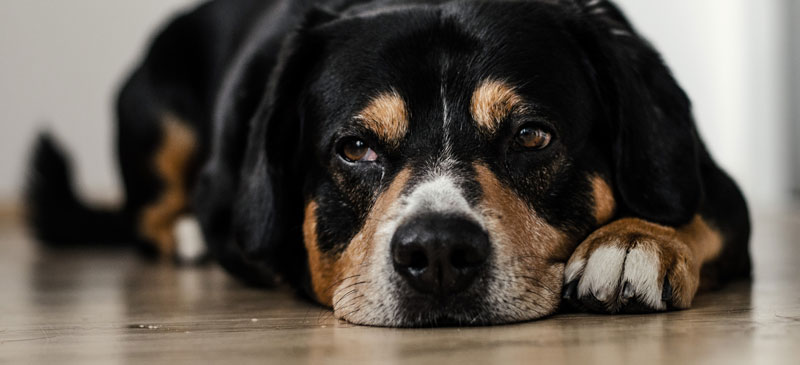Even the hardiest dogs can suffer from separation anxiety. In fact, most dogs at one point or another in their lives are likely to experience some level of anxiousness. Even though we’ve bred our canine friends for life in the human world, dogs retain a strong pack instinct. This means that—while they highly value family bonding—time away from a core social group is unavoidably stressful for any pup.
What’s the difference between separation anxiety and loneliness, nervousness, and other normal behaviors?
Dogs are super communicative creatures, but they’re not the best at analyzing their own behavior. The best way to differentiate between anxiety and other behaviors is to monitor your pet before, during, and after separation. Comparing these timeframes should help you diagnose whether the separation is the root of your dog’s issue.
In other words, what might first appear like separation anxiety might actually be an excess of energy from your pet being cooped up inside—or even a case of boredom. Take time to watch for these tell-tale behaviors:

Now, ask yourself how severe each of these behaviors are. Do they increase dramatically when you leave? Do they worsen the more that you’re away? Are these sorts of actions totally out of character for your dog?
If the answer to these questions is a clear yes, then you may be dealing with separation anxiety. If not, try recapping a few core training techniques, to see if they make a difference. If you’re not sure, setting up a webcam and recording your dog while you’re away can be a helpful diagnostic (and interesting!) tool.
Why is my dog or puppy experiencing separation anxiety?
While there’s never a definitive cause of anxiety in dogs, those who are left alone for long periods (over three/four hours), left alone on a regular basis, or are left without access to outdoor space, are more likely to develop some form of trauma. If your dog’s routine doesn’t fit these criteria, it may still suffer from separation anxiety—or its behavior may be a case of excess energy.
How to train a puppy or young dog to deal with separation anxiety
Weaning your young dog from constant contact is one of the core steps to maturity in your pet. Successfully achieving independence requires combining consistent routines and commands with careful observation, and the sensitivity to pull back on training when you feel that things are getting too much for your pup. (Tip: as your puppy gets more comfortable with spending nights alone, try leaving some recently worn clothes that smell like you in their bed.)
What about me! How can I care for myself while my puppy learns?
Anyone who’s trained a puppy to be ok with spending time alone knows how upsetting—and even traumatic—the experience can be for owners. Leaving for work, or lying awake at three a.m., listening to the newest addition to your family crying out, can make even the hardest of hearts relent.
During these times, try to remain objective and reach out to other owners, friends, family, or online forums. Hearing about the stories of others is great for re-upping motivation—and rest assured, you can do it! If you do decide to spend some nights on the floor next to your puppy’s basket, don’t feel too bad about it.
Will my dog ever grow out of separation anxiety?
Young dogs are the most likely to experience separation anxiety—specifically, those between nine and twelve months old. However, it’s a bit of a myth to state that dogs panicking when their owner’s leave is just a phase, or something only affecting younger pups.
In fact, separation anxiety can affect dogs of all ages and is more a matter of owner routines and pet’s individual personalities than years. Even the oldest dogs can acquire new separation issues if something major changes in their environment, such as when moving home.



